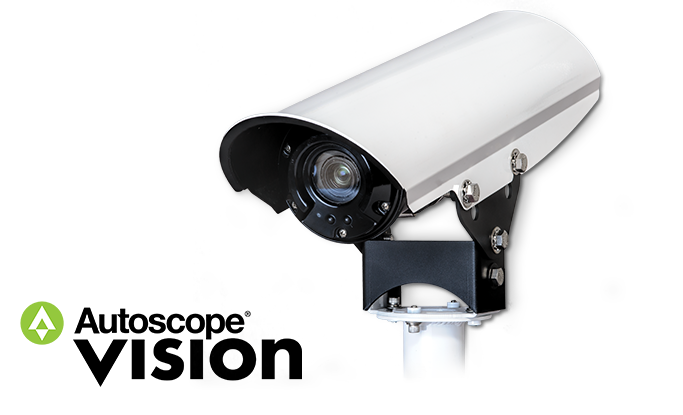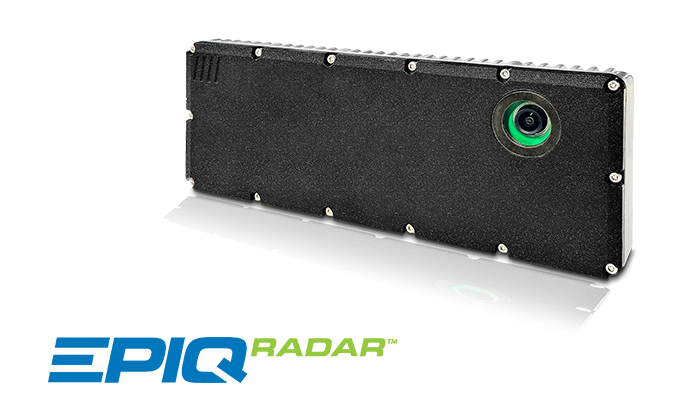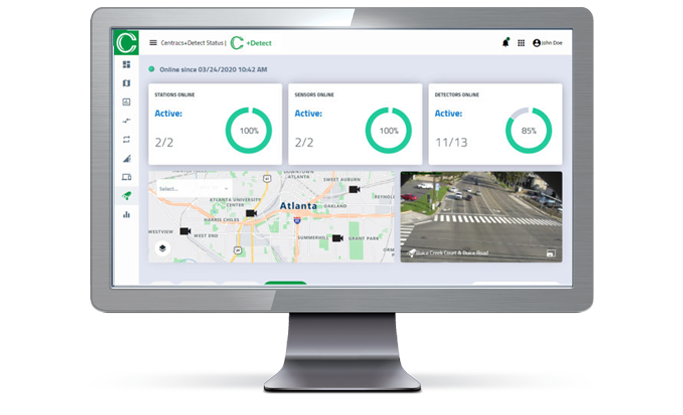Emergency Vehicle Preemption: Enhancing Safety and Efficiency at Intersections
Understanding Emergency Vehicle Preemption
Emergency Vehicle Preemption (EVP) is a critical traffic management system that enables emergency responders and priority vehicles – such as fire and rescue, EMT and ambulance, and law enforcement vehicles – to safely and quickly navigate through a roadway network. An EVP system works by temporarily overriding normal traffic signal operations, giving green lights to approaching emergency and priority vehicles while extending red lights to cross traffic. This reduces response times and minimizes the risk of collisions at intersections.
A traffic signal preemption system typically leverages technologies like GPS, infrared, acoustic sensors, or radio signals at an intersection to detect the presence and direction of an emergency vehicle. Once detected, the system communicates with the traffic signal controller to adjust the signal light cycle for the approaching emergency vehicle.

Implementing an emergency vehicle preemption system is vital for public safety. It ensures that emergency responders can reach their destinations quicker, which can be the difference between life and death in critical situations. Additionally, it enhances safety for all road users by reducing the likelihood of accidents at intersections during emergency responses.
Types of EVP Systems
Passive vs. Active Preemption
There are typically two main types of EVP systems: active and passive. An active emergency vehicle preemption system uses direct communication such as GPS, infrared, or radio signals from the emergency or priority vehicle to the traffic signal preemption system receiver at the intersection. A passive emergency vehicle preemption system relies on sensors that detect the presence of emergency vehicles based on sound or motion, without direct communication. Active systems offer greater precision and reliability in managing emergencies.
Priority vs. Preemption
While both aim to improve safety at the intersections, vehicle priority and emergency vehicle preemption systems serve different purposes. Vehicle priority systems adjust signal timing to favor public transit or freight vehicles, reducing delays without fully interrupting normal traffic patterns. An emergency vehicle preemption system gives immediate right-of-way to emergency responders by overriding standard signal timing. Unlike priority systems, preemption systems temporarily suspend regular traffic flow to clear the path for emergency response vehicles.
Vehicle-based vs. Infrastructure-based Systems
A vehicle-based emergency vehicle preemption system equips emergency vehicles with OBUs to directly communicate with traffic signals. This enables the vehicle to trigger the traffic signal EVP system as it approaches an intersection. An infrastructure-based emergency vehicle preemption system relies on roadside sensors or cameras to detect approaching emergency vehicles and activate signal changes.
The Need for Emergency Vehicle Preemption
Challenges Faced Without EVP
Cities and communities without an EVP system face serious challenges that can compromise public safety and emergency responsiveness. Without a traffic signal preemption system, emergency vehicles are forced to navigate congested intersections, increasing response times, and raising the risk of collisions. Delays at traffic signals can cost precious minutes during life-threatening emergencies, impacting outcomes for patients, fire containment, or crime response. Additionally, the lack of an emergency vehicle preemption system puts other drivers and pedestrians at greater risk, as emergency vehicles may need to maneuver unpredictably through traffic. This can lead to confusion, accidents, and traffic disruptions, creating a larger gap to Vision Zero.
What are the benefits of using EVP systems?
By controlling traffic signals ahead of approaching emergency and priority vehicles via a traffic signal preemption system, cities can dramatically reduce response times to critical incidents. This quicker response can save lives, limit property damage, and improve outcomes in medical, fire, and law enforcement emergencies. An EVP system also creates a predictable, controlled environment for both emergency responders and civilian drivers. Additionally, smoother emergency vehicle movement reduces traffic disruptions and congestion, improving overall traffic flow. For growing cities, investing in a modern emergency vehicle preemption system supports smarter infrastructure and aligns with public safety goals.
How Traffic Signal Preemption for Emergency Vehicles Works
Core Components of EVP Systems
An emergency vehicle preemption system relies on a combination of advanced technologies that work together to ensure emergency vehicles can safely and quickly navigate intersections. At the heart of the system are vehicle-mounted devices or on-board units (OBUs), such as GPS units and signal transmitters. These OBUs communicate with the traffic signal preemption system at the intersection as the vehicle approaches.
Intersection controllers receive signals from the emergency and priority vehicles and override normal traffic light cycles to give the vehicle a green light while extending red light for cross traffic. The controller is programmed to manage timing and ensure safe transitions for all directions of traffic
Sensors such as infrared receivers, acoustic detectors, or radio antennas are installed at intersections to detect approaching emergency vehicles. When paired with GPS-enabled signal preemption, the system can accurately track vehicle location, speed, and direction, enabling the situational awareness needed to dynamically make signal changes.
Communication and Signal Logic
How signals are triggered and restored
In an EVP system, traffic signals are triggered through a combination of OBUs, GPS, and intersection-based sensors. As an emergency vehicle approaches, its onboard transmitter sends a signal to the traffic signal preemption system. Sensors or receivers at the intersection detect this signal and communicate with the traffic signal controller. The controller then overrides the normal signal cycle, granting a green light to the emergency vehicle’s path while safely stopping cross traffic. Once the vehicle passes through, the system automatically restores the standard signal timing, ensuring minimal disruption to overall traffic flow.
Real-time traffic signal optimization
Modern emergency vehicle preemption systems are evolving to include real-time traffic signal optimization through route-based priority. Unlike traditional systems that trigger signals only at intersections, route-based priority uses GPS, OBUs, and traffic data through an ATMS solution to optimize the entire route ahead of an emergency vehicle. As the vehicle moves, the traffic signal preemption system communicates with multiple signal controllers along the route, adjusting timing proactively to create a green corridor. Sensors and controllers work together to calculate ETA. This enables the EVP system to anticipate arrival times and reduce delays, improving safety and response times. This advanced and more intelligent form of emergency vehicle preemption integrates with existing computer-aided dispatch and automatic vehicle location (CAD/AVL) systems. A real-time optimized route-based EVP solution represents a breakthrough for cities aiming to enhance public safety.
Cutting-Edge EVP Technologies and Trends
Integration with Smart City Infrastructure
Cloud-based traffic signal preemption systems
A cloud-based emergency vehicle preemption system powered by AI transforms how cities manage emergency response. By leveraging V2X communication, emergency vehicles equipped with OBUs can interact in real time with a centralized traffic signal preemption system. This system uses AI to analyze traffic patterns, predict arrival times, and optimize signal changes across multiple intersections.
AI and predictive modeling
Route-based EVP solutions enable dynamic route optimization. This creates an active green light corridor tailored to the emergency vehicle’s route. AI algorithms evaluate traffic conditions, adjust signal timing, and coordinate with intersection controllers several intersections ahead to minimize delays and improve safety.
Interoperability with transit and freight systems
This intelligent approach to traffic signal preemption and priority integrates with existing CAD/AVL systems. It’s a scalable and flexible solution that enhances public safety, supports Smart City initiatives, and enhances public transit services.
Econolite Solutions
The following solutions by Econolite support the implementation of EVP deployments.
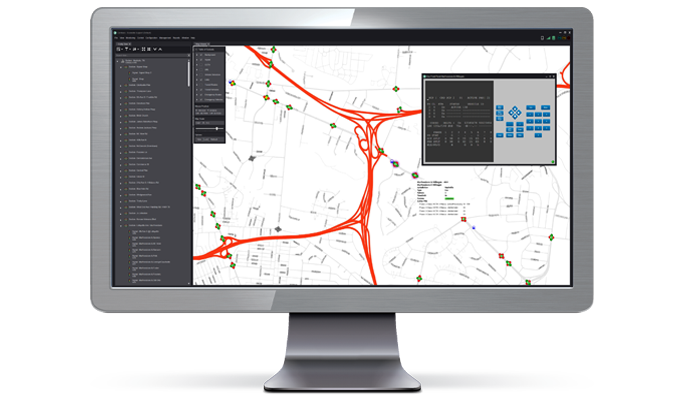
Centracs® Priority
Centracs Priority provides dynamic signal control for transit and emergency vehicles and does not require any additional in-cabinet hardware. Centracs Priority features intelligent ETA-based signal priority without the need for complex, integration-heavy CAD implementations. This dramatically reduces hardware and maintenance costs when compared to traditional systems. In addition to existing support for most major CAD/AVL systems, Centracs Priority offers a lightweight EVP option that only requires vehicle location, as well as destination for emergency vehicles, and stops and schedule for transit. This service features a dynamic routing engine that uses vehicle position and AI to continually re-evaluate the route and controller calls to ensure optimal response times with minimal disruption. This helps lower response times and improve clearance performance. In addition, regular vehicular traffic is far less impacted through the ability to use ETAs that are three steps ahead, planning signal timing for vehicle arrivals well in advance of each intersection.
Cobalt® with EOS
Econolite Cobalt® ATC controllers powered by EOS are designed to for Connected Vehicle (CV) programs, including Centracs Priority. The Connected Vehicle Co-Processor (CVCP) module supports advanced Vehicle to Everything (V2X) processing for CV applications. EOS features a revolutionary coordinator design, enabling immediate coordination decisions, including ETA-based. This coordinator includes adaptive split balancing using the Purdue GOR/ROR5 metric for phase failure. EOS provides 16 preemption sequences; each may be configured as priority, including multiple exit preemption options. EOS includes a cabinet interlock feature to protect and verify critical preemption configuration. It also features NTCIP 1211-based Signal Control Priority (SCP) for 10 classes of priority vehicles, handling multiple concurrent requests with different priority service levels based on vehicle class, as well as logging of priority requests.
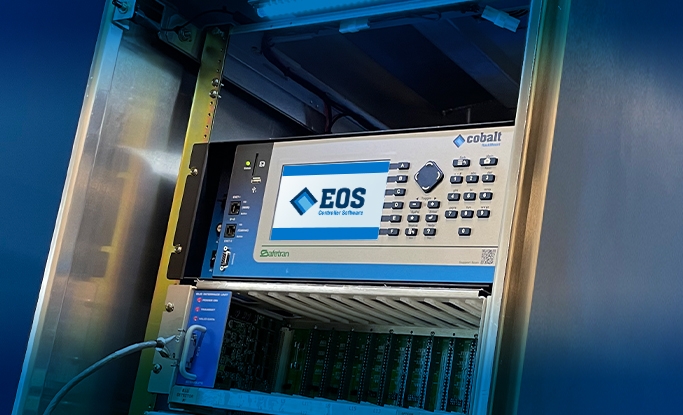
Sensors
Econolite’s industry leading portfolio of intelligent sensors support and deliver the vital real-time roadway data and situational awareness required for emerging Smart City applications and Dynamic Multimodal Network Management. Econolite’s best-in-class radar and AI-powered HD video sensors facilitate vehicle and pedestrian counting, classifying, tracking, and providing advanced detection for adaptive signal control and predictive traffic management. In modern multimodal intersections and roadways, advanced detection sensors are indispensable for future transportation management strategies. Econolite offers the following detection sensor solutions:
Implementing an Emergency Vehicle Preemption System & Challenges
Deployment Considerations
Intersection types and traffic volume
High traffic and pedestrian volume intersections or those with complex signal phases benefit most from emergency vehicle preemption. Tailoring the system to local traffic patterns ensures optimal performance. Integrating V2X communication enhances real-time responsiveness, enabling emergency vehicles to communicate directly with the EVP system. This coordination minimizes delays and clears paths efficiently. A well-designed emergency vehicle preemption system that addresses intersection types and traffic volumes improves emergency response while mitigating impacts to traffic flow.
Vehicle fleet equipment
It’s vital for cities to assess the capabilities of its emergency and priority vehicle fleet. Compatibility with onboard EVP signal controller equipment such as GPS, transponders, or mobile data terminals ensures reliable EVP performance. Upgrading or standardizing fleet technology enhances system responsiveness and integration.
Budget, ROI, and long-term scalability
Proper planning for emergency vehicle preemption investment is essential in delivering measurable ROI such as fewer accidents and quicker incident response and clearance performance. In addition, scalable systems allow for phased implementation, adapting to growing fleets or expanding jurisdictions, as well as helping future-proof the EVP solution.
Case Studies and Real-World Examples
Successful implementations in mid-size cities
Mid-sized cities across the country are successfully deploying emergency vehicle preemption systems to enhance response times and improve traffic safety. Municipalities including San Jose, CA, Richmond, VA, Hillsborough County, FL, and Tulsa, OK have integrated or are integrating modern emergency vehicle preemption solutions into existing traffic infrastructure. Econolite is helping these cities reduce delays for fire, EMS, and police units while minimizing disruption to general traffic flow. Leveraging Econolite’s solutions, municipalities are achieving measurable improvements in emergency response efficiency. These centralized EVP systems use real-time communication between emergency vehicles and traffic signals to clear intersections ahead of arrival, reducing crash risks and saving critical seconds.
Performance metrics: reduced response time, improved clearance
While performance updates are not widely published, modern emergency vehicle preemption systems have reduced response times. For example, San Jose, CA recently adopted a centralized, GPS-based EVP system that integrates with its advanced traffic management and public safety dispatch systems. According to Ho Nguyen, Intelligent Transportation System manager for the city of San Jose, “Intersection delay was reduced from seven seconds per intersection to less than one second.” San Jose Fire Chief Robert Sapien, Jr. noted that they are shaving nearly one-half minute off their average response time because they can now get through intersections faster. This system remotely controls traffic signals based on real-time vehicle location and dispatch data. As a result, the city has made significant strides in reducing emergency response times, improving intersection clearance and responder safety.
The city of Tulsa and Hillsborough County implemented Centracs Priority emergency vehicle preemption systems across key corridors. This system interfaces with GPS and AVL data from emergency and transit vehicles. Studies and implementations of EVP systems in various locations have shown positive results in reducing response times, with improvements ranging from 14 percent to 50 percent in some cases. For example, Hillsborough County reported an average reduction of 18 percent in emergency response times.
Interoperability and Standardization
Challenges with multi-agency coordination
Implementing a centralized emergency vehicle preemption system often requires extensive coordination among multiple agencies and their established operational systems. Each agency has different operational needs, technologies, systems, and priorities, making alignment a complex task. Successful deployment of an EVP depends on unified planning, shared data protocols, and clear communication. Even with a robust and scalable software solutions, collaboration is key to unlocking the full benefits of a dynamic EVP system.
Open protocols and NTCIP compliance
Open protocols and NTCIP compliance are essential to successfully deploying an emergency vehicle preemption system. These standards ensure interoperability between traffic signal controllers, emergency vehicles, emerging technologies, and central management software, regardless of vendor. By using open protocols, municipalities can avoid vendor lock-in and scale their EVP capabilities more efficiently. NTCIP-compliant systems also support integration with broader public safety mobility solutions, enabling real-time communication and traffic data-sharing coordination across agencies.
Maintenance and Reliability
Environmental and hardware durability
Durability is critical to any emergency vehicle preemption system. Hardware must withstand harsh weather, vibration, and continuous use to ensure reliable EVP operations. Standardized hardened components integrated with connected vehicle infrastructure help maintain consistent performance and support more resilient emergency services.
Ongoing calibration and testing
maintaining an emergency vehicle preemption system is critical. Regular system checks ensure accurate EVP operations and traffic signal responsiveness. These updates help prevent failures, optimize performance, and ensure emergency responders receive consistent, real-time preemption at intersections.
The Future of EVP in Intelligent Transportation
5G and V2X integration
The future of emergency vehicle preemption systems is being transformed by 5G and V2X communications. These technologies enable faster, more reliable vehicle to infrastructure (V2I) communications, enabling emergency vehicles to interact with traffic signals in real-time. As part of evolving connected vehicle infrastructure, 5G and V2X enhance the precision and effectiveness of EVP. These advancements support scalable, data-driven public safety mobility solutions, enabling AI-powered route-based priority and route optimization based on ETA. This will enable first responder to more effectively navigate and optimize travel times.
Autonomous emergency vehicle support
With the prospect of automated emergency vehicles, EVP systems must evolve to support the management of fully-automated vehicles. Leveraging connected vehicle infrastructure and V2X communications, an AI-powered route-based EVP system will enable autonomous units to request and receive traffic signal priority and optimized routes with little human intervention. This advancement can help augment emergency responses for Smart City networks.
Scalability to connected intersections and other jurisdictions
The ability to scale across connected intersections and neighboring jurisdictions is critical to the efficacy of EVP. Leveraging connected vehicle infrastructure and V2X communications, these systems can deliver seamless, route-based priority across cities and regional boundaries. As cities adopt AI-driven traffic management, emergency vehicle preemption will become more dynamic. Scalable architecture ensures that as networks grow, the emergency vehicle preemption system remains efficient, interoperable, and responsive.
Cabinets
Traffic Controllers
Systems Deployed
Sensors Installed

